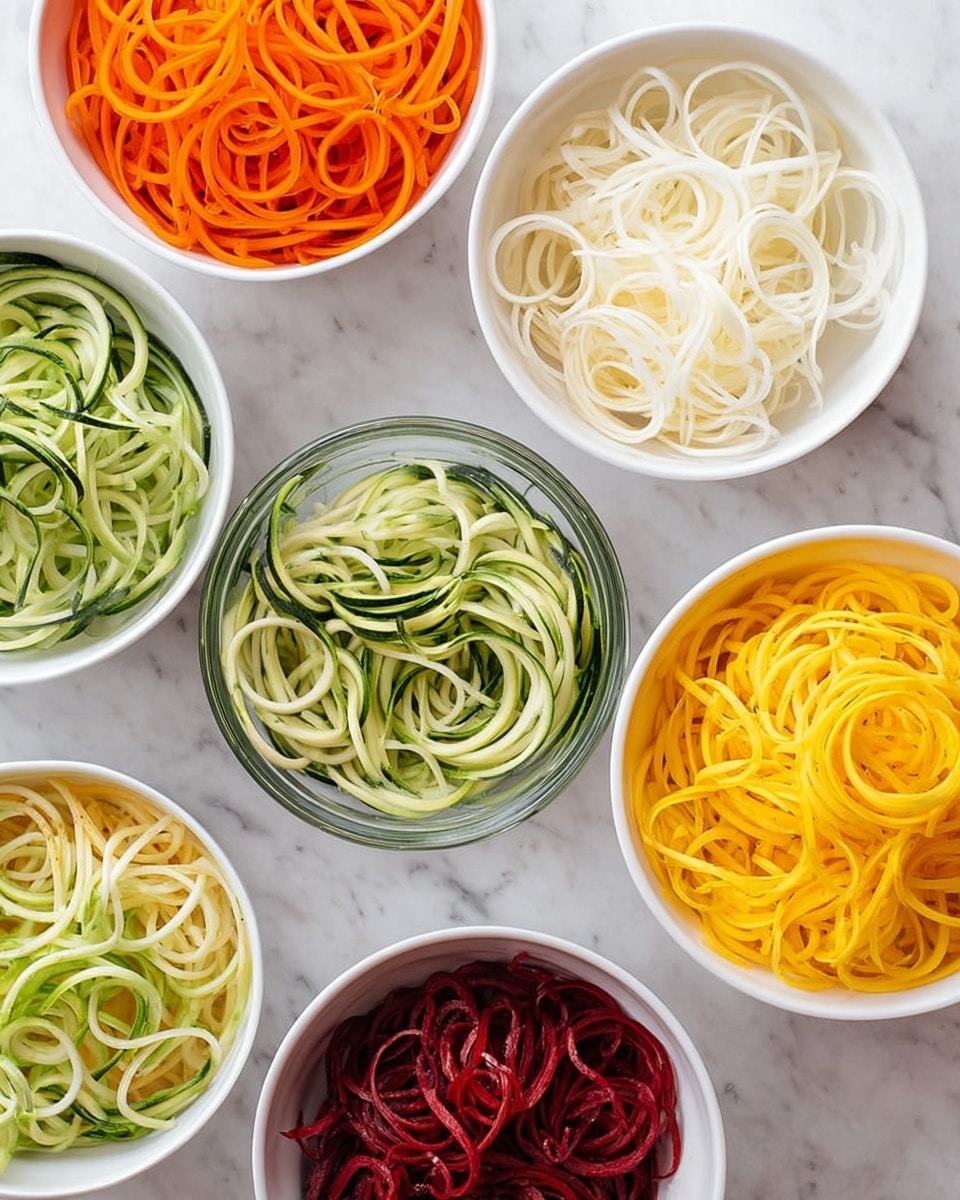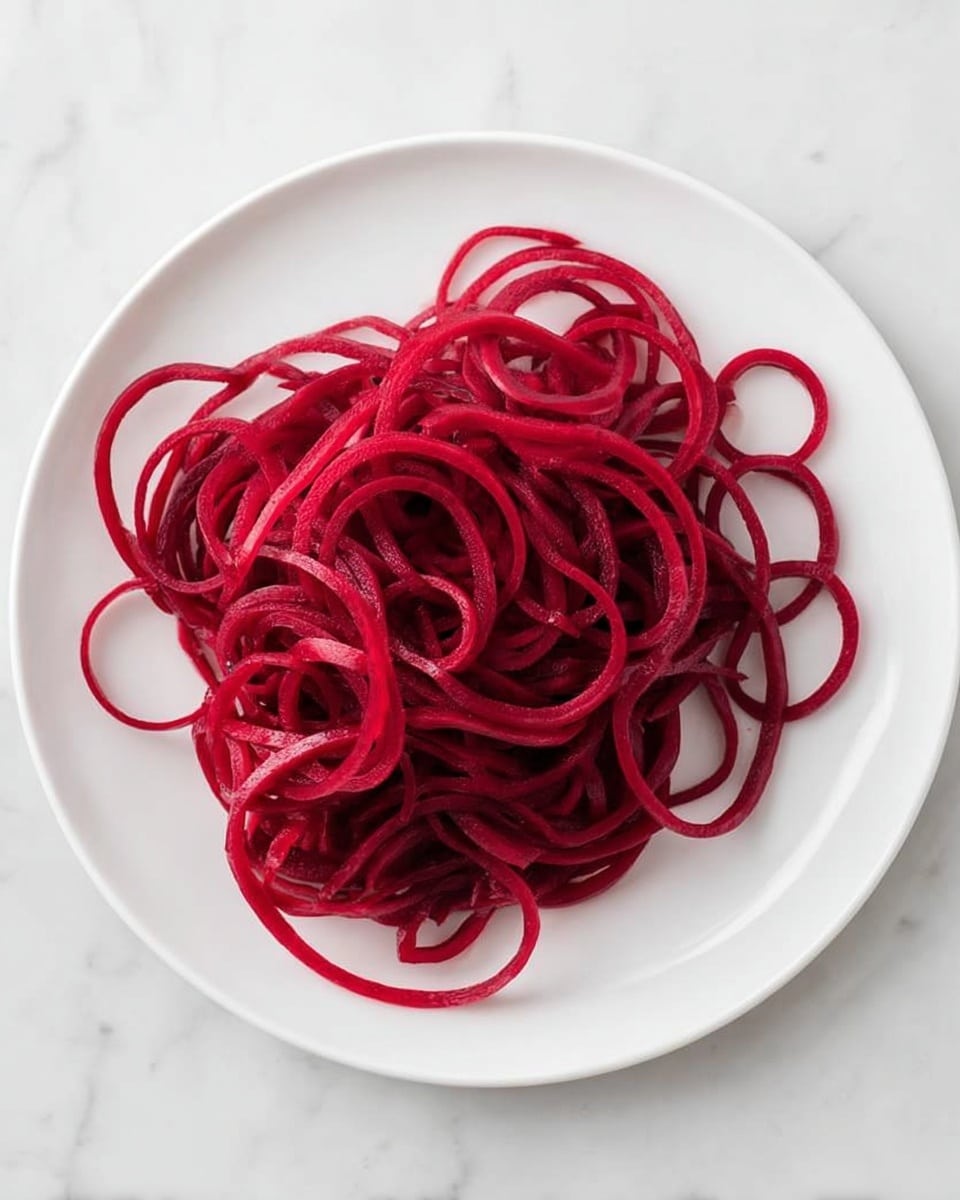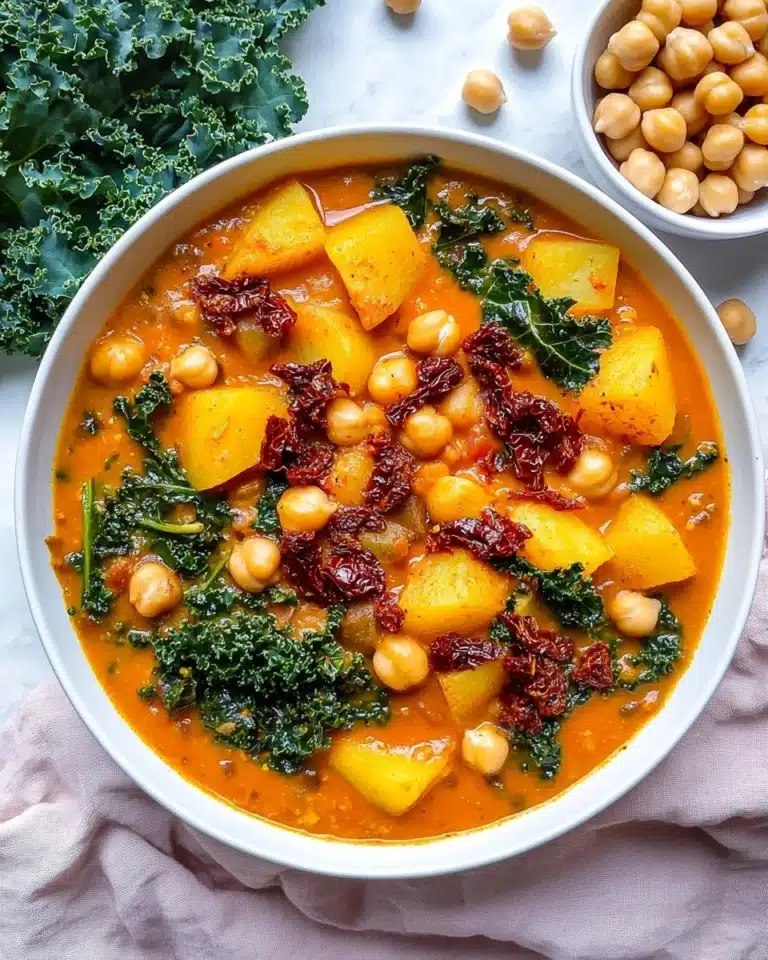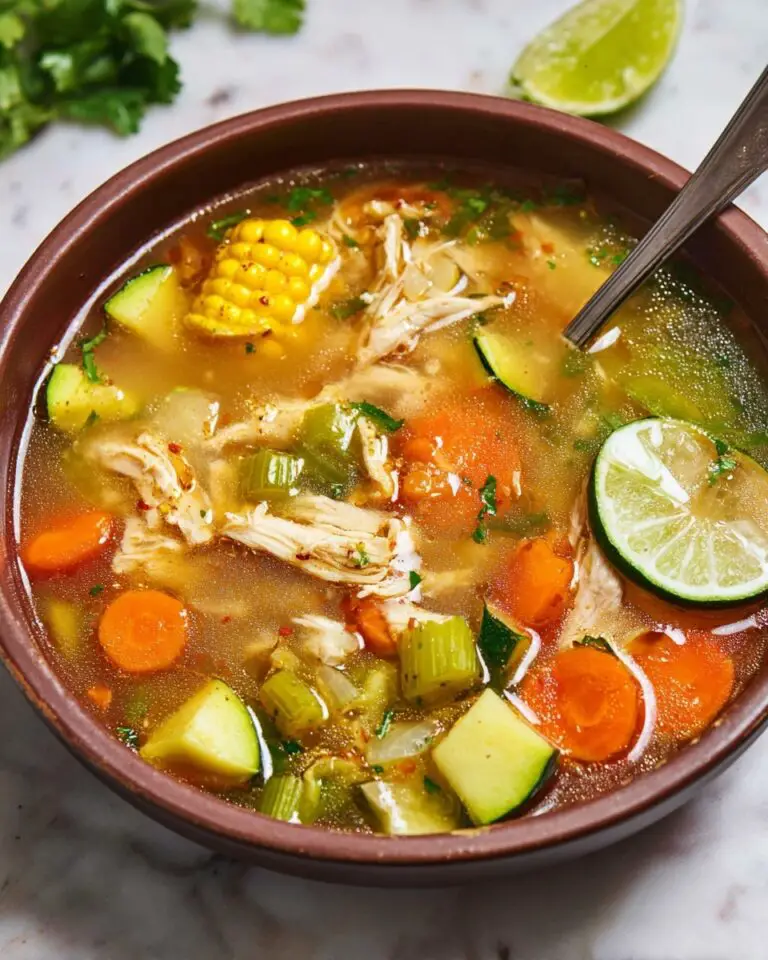If you’re looking for a fresh, vibrant twist on your meals, then you’re going to love this fan-freaking-tastic guide on How to Make Veggie Noodles Recipe. I absolutely love how these veggie noodles bring so much color, crunch, and healthy goodness to the table without the heaviness of traditional pasta. Whether you’re trying to cut carbs, sneak more veggies into your diet, or simply want to wow your family with something fun, you’ll find that making your own veggie noodles is easier—and more satisfying—than you think. Let me walk you through it!
Why You’ll Love This Recipe
- Ultra Versatile: You can make veggie noodles from a whole bunch of colorful vegetables, keeping meals exciting.
- Healthy and Light: Perfect for when you want a lighter, nutrient-packed alternative to traditional pasta.
- Fun and Easy Prep: Once you get your spiralizer or peeler ready, it’s a quick kitchen win that feels rewarding.
- Family Friendly: My family goes crazy for these noodles; sometimes they don’t even realize they’re eating extra veggies!
Ingredients You’ll Need
The beauty of this recipe is how fresh and natural the ingredients are. Each veggie adds a unique flavor and texture, so you can mix and match based on what you have or what’s in season. Shopping tip: look for firm, large vegetables for easier spiralizing.
- Butternut squash: Choose one with a long neck—you’ll only use that part for noodles and save the bulb for soups or roasting.
- Beet: Pick a large beet with smooth skin—peel carefully before spiralizing to avoid stubborn bits.
- Cucumber: A large English cucumber is best; no need to peel if you like a bit of skin texture and extra nutrients.
- Carrot: The thicker and fatter, the better to get nice noodle shapes—peel if the skin looks too rough.
- Daikon radish: This mild-flavored root veggie makes crisp, refreshing noodles that really stand out.
- Summer squash: Large yellow squash works great; the skin is tender, so no need to peel.
- Kohlrabi: Remove the greens for later use (they’re great in salads or sautés), then peel any rough spots on the bulb before spiralizing.
- Sweet potato: Look for thick and firm sweet potatoes; peeling is a must for smooth noodles.
- Zucchini: Large zucchinis yield better noodles, and the skin adds lovely color and nutritional value.
Variations
I love how flexible this recipe is—you can adjust every time depending on your mood or pantry. You might want to try different veggie combos or even blend in some herbs and spices when serving. Don’t be afraid to experiment; the noodles are just the start.
- Add a Protein Boost: Toss cooked chicken, tofu, or shrimp with your veggie noodles for a complete meal—my go-to when I want something hearty.
- Spicy Kick: Mix in a spicy peanut sauce or drizzle with chili oil to make the noodles pop with flavor.
- Raw or Cooked: You can enjoy noodles fresh and crunchy or lightly sauté for warmth—both ways taste amazing.
- Seasonal Swaps: When it’s colder, I swap cucumber for roasted butternut squash noodles to add cozy sweetness.
How to Make How to Make Veggie Noodles Recipe
Step 1: Prep Your Vegetables Like a Pro
Start by washing all your veggies thoroughly. For butternut squash, trim off the thick, seedy base—you won’t need it for noodles, but save it to roast later; it’s a great way to avoid waste. Peel any veggies that have tough or thick skins like butternut, beet, sweet potato, and kohlrabi. For cucumbers, zucchini, summer squash, and daikon, peeling isn’t necessary unless you prefer it.
Step 2: Spiralize to Create Your Noodles
I highly recommend using a good spiralizer—it makes life so much easier and more fun! For carrots and cucumbers, you can also use a julienne peeler if you don’t have a spiralizer; it creates nice noodle-like strips. For zucchini and summer squash, a regular vegetable peeler works beautifully to make wide ribbons that feel fancy and delicate. Remember to keep a steady hand and go slow enough that your noodles don’t snap.
Step 3: Cook or Enjoy Raw
You can dive straight into your veggie noodles raw if you’re going for a crisp, fresh salad or a light side. If you prefer something warmer and softer, sauté the noodles in a pan with a splash of olive oil for just 2-3 minutes—don’t overcook! This keeps them tender but still with a nice bite. Sweet potato and butternut noodles might take a little longer to soften, about 4-5 minutes.
Step 4: Season and Serve
Once your noodles are ready, season with salt, pepper, herbs, or your favorite sauce. I love tossing mine with a lemon-garlic dressing or a splash of soy sauce and sesame oil. The flavor combos are endless, and you’ll find your favorites after just a few tries.
Pro Tips for Making How to Make Veggie Noodles Recipe
- Choose Firm Veggies: Softer veggies won’t make sturdy noodles, so pick firm, fresh produce for the best results.
- Save Scraps Creatively: I learned to save stems and peels for homemade stocks or roasting—they add great flavor.
- Don’t Overcook: Just a quick sauté keeps noodles tender yet crisp; mushy noodles can be a bummer.
- Keep Noodles Dry: If the noodles are too wet, pat them dry to avoid sogginess in your dish.
How to Serve How to Make Veggie Noodles Recipe
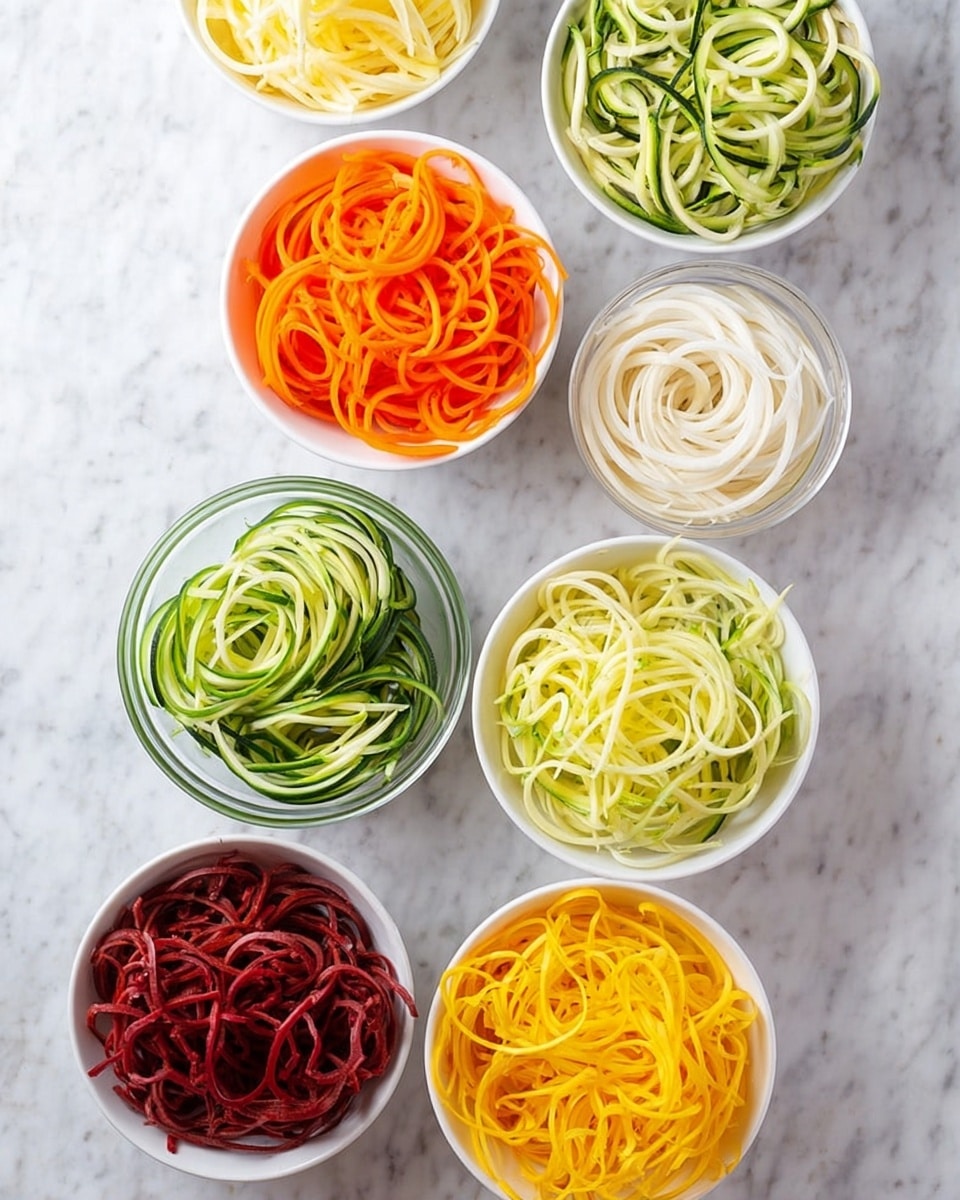
Garnishes
I love topping veggie noodles with fresh herbs like parsley, basil, or cilantro, which always brighten the dish. A sprinkle of toasted sesame seeds or crushed peanuts adds the best crunch, and a wedge of lemon or lime on the side gives a lively zing.
Side Dishes
Pair these veggie noodles with grilled chicken breast, pan-seared tofu, or a simple baked fish for an easy, well-rounded meal. I often serve mine alongside a mixed green salad or roasted vegetables for extra variety and texture.
Creative Ways to Present
Once, for a family dinner, I made layered veggie noodle “lasagna” by alternating zucchini and carrot noodles with tomato sauce and cheese—everyone was so impressed! You can also twirl the noodles into nests on the plate for an elegant presentation at dinner parties.
Make Ahead and Storage
Storing Leftovers
I keep leftover veggie noodles in an airtight container in the fridge for up to 2 days. To avoid them getting soggy, I try to store them separately from any sauce or dressings and add those fresh when serving.
Freezing
Freezing spiralized veggies isn’t my favorite because they tend to become watery and mushy when thawed. However, you can freeze cooked veggie noodle dishes that have a sauce, which helps retain texture better.
Reheating
To reheat, I gently toss the noodles in a hot pan with a little olive oil or butter for just a minute or two to warm through without making them mushy. Microwaving can make them watery, so stovetop reheating is my go-to.
FAQs
-
Can I make veggie noodles without a spiralizer?
Yes! While a spiralizer makes the process super easy, you can use a julienne peeler or a regular vegetable peeler to create thin, noodle-like ribbons, especially with zucchini, cucumbers, and summer squash.
-
Which veggies make the best noodles for beginners?
Zucchini and carrots are great for beginners because they’re easy to handle and spiralize. Their texture is forgiving, and they cook quickly, making them ideal for experimenting with veggie noodles.
-
How long do veggie noodles last in the fridge?
Freshly made veggie noodles typically last 1-2 days in the fridge if stored properly in an airtight container. It’s best to keep them separate from any sauces or dressings until serving.
-
Can I eat veggie noodles raw?
Absolutely! Many veggie noodles, like cucumber, zucchini, and carrot, are delicious raw and add a refreshing crunch to salads or as a cold side dish.
Final Thoughts
Honestly, How to Make Veggie Noodles Recipe has become one of my favorite kitchen tricks because it’s so adaptable and nourishing. Whether you’re making a quick lunch or dressing up dinner for guests, these veggie noodles bring life and health to your plate in the most enjoyable way. Give it a try—you might surprise yourself with how much you love swapping classic pasta for this colorful, crunchy alternative. I’m cheering you on to get spiralizing and enjoy all the yum!
Print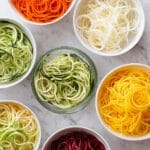
How to Make Veggie Noodles Recipe
- Prep Time: 10 min
- Cook Time: 0 min
- Total Time: 10 min
- Yield: 2 servings
- Category: Side Dish
- Method: No-Cook
- Cuisine: International
- Diet: Vegetarian
Description
Discover how to make vibrant and healthy veggie noodles using a variety of fresh vegetables like butternut squash, beet, cucumber, carrot, and more. This simple guide uses a spiralizer or julienne peeler to transform these veggies into delicious, low-carb noodle alternatives, perfect for a nutritious meal or side dish.
Ingredients
Vegetables
- Butternut squash – 1 medium (long neck preferred)
- Beet – 1 large
- Cucumber – 1 large English cucumber
- Carrot – 1 large, fat carrot
- Daikon radish – 1 medium
- Summer squash – 1 large yellow squash
- Kohlrabi – 1 bulb
- Sweet potato – 1 thick sweet potato
- Zucchini – 1 large
Instructions
- Prepare butternut squash noodles: Select a butternut squash with a long neck. Chop off the fat, seedy base and save it for another use if desired. Peel the neck portion of the squash, then use a spiralizer to create noodles from the peeled flesh.
- Make beet noodles: Choose a large beet and peel off its skin. Use a spiralizer to turn the beet into noodles.
- Create cucumber noodles: Use a large English cucumber. There is no need to peel it. Use a spiralizer or julienne peeler to make cucumber noodles.
- Form carrot noodles: Find a fat carrot, scrub well or peel if dirty. Spiralize or use a julienne peeler to make carrot noodles.
- Daikon radish noodles: Peel the daikon radish if needed and use a spiralizer to create noodles.
- Prepare summer squash noodles: Take a large yellow squash and use a spiralizer or julienne peeler to make noodles. Alternatively, peel it with a vegetable peeler into thick ribbon-shaped noodles. The skin does not need to be removed.
- Make kohlrabi noodles: Remove the greens and save them for another use. Peel any rough or nubby parts off the bulb. Spiralize the peeled kohlrabi to create noodles.
- Create sweet potato noodles: Peel the sweet potato and use a spiralizer to form noodles.
- Form zucchini noodles: Select a large zucchini and use a spiralizer or julienne peeler to create noodles. Alternatively, peel it into thick ribbons with a vegetable peeler. The skin can remain on.
Notes
- Use a spiralizer or julienne peeler for best noodle shapes and texture.
- Vegetable bases like the butternut squash end and kohlrabi greens can be saved and used in soups, stocks, or sautés.
- Veggie noodles make a nutritious, colorful, and low-carb alternative to traditional pasta.
- Choose fresh, firm vegetables for optimal noodle quality.
- No cooking required; these noodles can be eaten raw, sautéed, or lightly cooked depending on your recipe.
Nutrition
- Serving Size: 1 cup
- Calories: 45
- Sugar: 4g
- Sodium: 30mg
- Fat: 0.2g
- Saturated Fat: 0g
- Unsaturated Fat: 0.2g
- Trans Fat: 0g
- Carbohydrates: 10g
- Fiber: 3g
- Protein: 1g
- Cholesterol: 0mg

